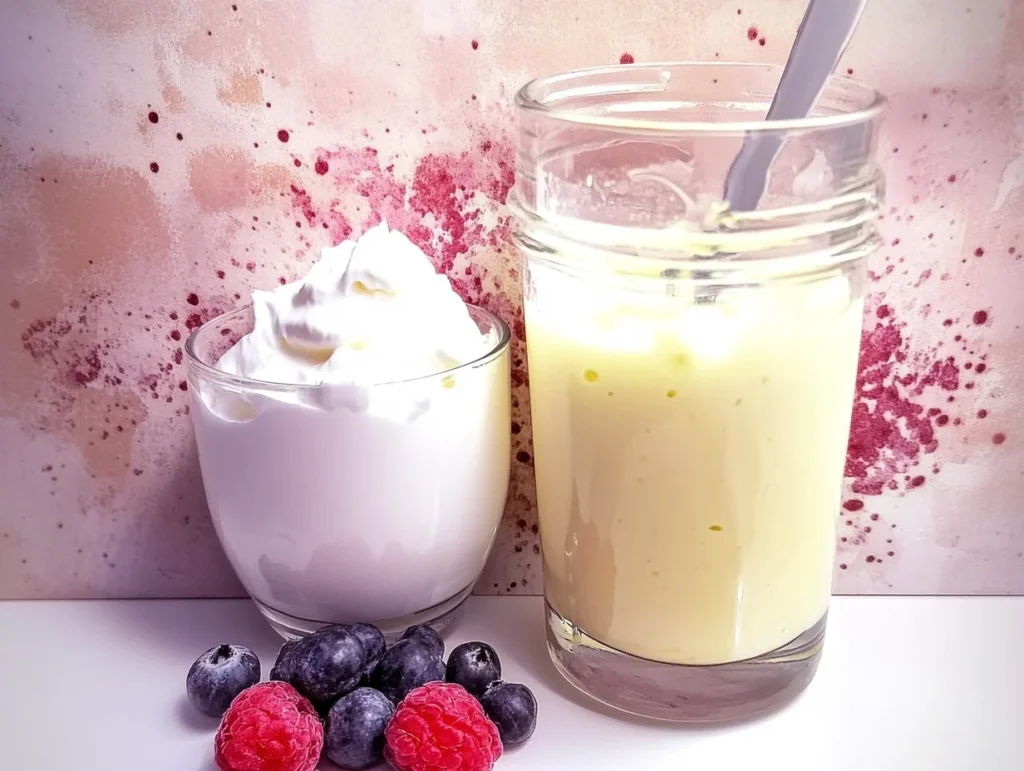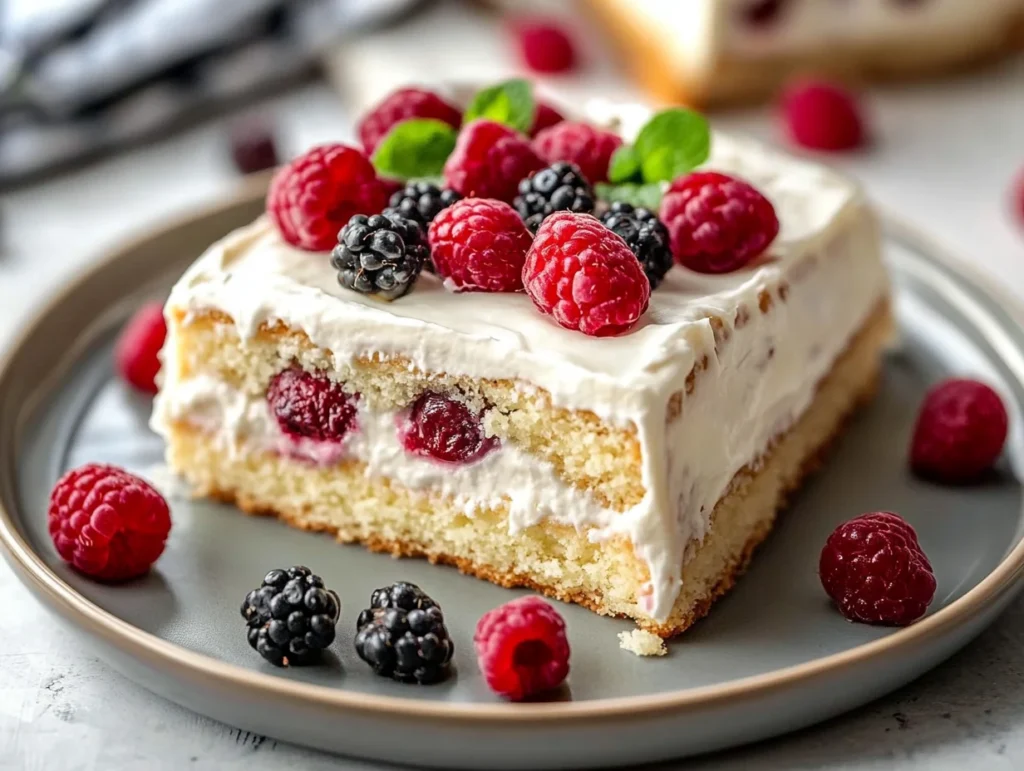Baking is often described as both a science and an art—and for good reason. It’s a delicate balance where every ingredient contributes to the magic that unfolds in the oven. Each element plays a crucial role in determining your cake’s taste, texture, and even its visual appeal. From the leavening agents to the liquids, every choice you make impacts the final result. So, when it comes to substituting a key ingredient like buttermilk, it’s natural to pause and wonder: “Can I use kefir instead?”
The answer to this bubbling question (pun intended!) lies in understanding the similarities and differences between the two. Kefir, with its tangy flavor and probiotic-packed goodness, not only mimics the acidity of buttermilk but also brings its own unique qualities to the table. In the realm of baking, where small tweaks can lead to big changes, kefir offers a versatile and nutritious alternative that can enhance your recipes.
Let’s dive into this substitution conundrum, explore the science behind it, and uncover how kefir can seamlessly take buttermilk’s place in your cake recipes. Whether you’re experimenting with new ingredients or simply improvising with what you have in the fridge, kefir just might become your new baking secret weapon!
Introduction to Kefir and Buttermilk
What Is Kefir?
Blasphemy aside, what exactly is kefir? It’s a fermented milk drink packed with probiotics, enzymes, and beneficial yeast. It has a tangy taste and a consistency that’s thicker than milk but thinner than yogurt. Originating in the Caucasus Mountains, it’s been a dietary staple for centuries and is known for its gut-healthy benefits.
Here’s a fun fact: Kefir grains—not grains like wheat or rice but rather clusters of bacteria and yeast—ferment the milk, giving it its signature tangy flavor and nutritional boost. Pretty cool, right?
What Is Buttermilk?
Interestingly, buttermilk isn’t quite what its name might lead you to believe. Contrary to what the name suggests, it’s not milk filled with butter. Instead, it’s a slightly tangy and fermented dairy product that has been a staple in kitchens for centuries. Traditionally, buttermilk was the liquid byproduct left behind after churning butter from cream—a natural result of the butter-making process. This traditional version was thinner and less acidic than the modern version we’re familiar with today.
Nowadays, the buttermilk you find in stores is typically cultured, meaning it’s made by adding lactic acid bacteria to regular milk. This fermentation process gives it its characteristic tangy flavor and thick, creamy texture, which makes it an essential ingredient in many recipes, especially in baking. The acidity of buttermilk reacts with leavening agents like baking soda, creating bubbles of carbon dioxide that help cakes and other baked goods rise beautifully while adding a tender crumb and subtle tang to the flavor profile.
So while the name may evoke images of rich, buttery milk, the reality is that buttermilk is a unique and versatile product with a fascinating history and a vital role in culinary traditions.
Its tangy flavor and acidic nature make it a beloved ingredient in baking, helping cakes rise and creating that tender crumb we all adore.
Key Differences Between Kefir and Buttermilk
While both kefir and buttermilk share some similarities—like their tangy flavor and acidic nature—there are a few key differences:
- Flavor: Kefir’s flavor is more pronounced and slightly yeasty.
- Probiotic Content: Kefir is a probiotic powerhouse compared to buttermilk.
- Fermentation Process: Kefir involves kefir grains, whereas buttermilk relies on specific bacterial cultures.
Understanding these distinctions is essential for figuring out how they work in recipes.

The Role of Buttermilk in Cake Recipes
Why Buttermilk Is Used in Baking
Why do so many cake recipes call for buttermilk? It’s not just about tradition—buttermilk is a multitasker in the baking world. Its acidity interacts with baking soda, creating carbon dioxide bubbles that help your cake rise. Plus, the tangy flavor balances the sweetness of cakes, giving them depth and richness.
Imagine biting into a fluffy, moist cake that practically melts in your mouth. That’s the magic of buttermilk at work!
How Buttermilk Affects Cake Texture and Flavor
Buttermilk contributes to:
- Moisture: Keeps your cake soft and tender.
- Tangy Flavor: Adds a slight zing that’s oh-so-yummy.
- Structure: Enhances the cake’s overall texture, ensuring it’s light yet firm enough to hold together.
When you think about it, buttermilk is like the unsung hero of cakes. It’s subtle but crucial.
Substituting Kefir for Buttermilk: Is It Possible?
Similarities Between Kefir and Buttermilk in Baking
Now, let’s get to the heart of the matter: Can kefir step into buttermilk’s shoes? Absolutely! Both are acidic and tangy, which means kefir can fulfill the same chemical role as buttermilk in baking—activating the baking soda and contributing to the cake’s rise.
They’re like cousins in the dairy family, so swapping one for the other usually works seamlessly. Still, a little tweak here and there might be necessary to perfect your cake.
Differences That Could Impact Baking Results
Even though they’re similar, kefir and buttermilk aren’t identical twins. Here’s how kefir’s unique characteristics could influence your cake:
- Thickness: Kefir’s thicker consistency might make your batter slightly denser.
- Flavor: Kefir’s robust tang might be more noticeable in the final product.
- Probiotics: These could slightly alter the cake’s texture due to ongoing fermentation.
While these differences aren’t deal-breakers, they’re good to keep in mind when experimenting.
Best Practices for Using Kefir as a Substitute
Want to nail the substitution? Follow these tips:
- Adjust Consistency: If your kefir is too thick, thin it with a splash of milk to match buttermilk’s texture.
- Taste Test: If you’re concerned about the tang, mix half kefir with half regular milk to mellow the flavor.
- Measure Properly: اUse the same quantity of as the recipe calls for buttermilk.
As long as you keep these pointers in mind, you’re golden!
Block Quote:
“Substituting kefir for buttermilk in cake recipes is like swapping one superstar for another. Both bring their unique flair to the table, ensuring your cake stays moist, fluffy, and delicious.” 🍰
Common Problems When Using Kefir Instead of Buttermilk
Adjusting the Acidity for Perfect Results
One potential hiccup? Kefir’s acidity might vary depending on the brand or fermentation process. If your cake turns out too tangy, don’t fret. Next time, dilute the kefir slightly or add a pinch of baking soda to balance the acidity.
Managing Thickness and Consistency
Kefir’s thickness can sometimes lead to a denser batter. To fix this:
- Thin the kefir with milk or water.
- Mix the batter gently to avoid overworking the gluten, which can make your cake tough.
Potential Changes in Flavor Profile
While kefir’s bold tang might elevate certain cakes (hello, lemon or berry flavors!), it could overpower subtler ones. Pair kefir with complementary ingredients to balance the overall flavor.
Block Quote:
“Think of baking as a dance—each ingredient has its role, and kefir can lead just as gracefully as buttermilk if you give it the right steps.” 🎶
Tips for Successfully Substituting Kefir in Cake Recipes
Choose the right type
Not all kefirs are created equal. Some are plain and unsweetened, while others are flavored or sweetened. When baking, stick to plain, unsweetened kefir. Flavored varieties can introduce unwanted sweetness or interfere with the cake’s flavor profile.
Mixing Techniques for Optimal Results
The way you mix your ingredients matters. Follow these tips:
- Combine Wet Ingredients First: Mix kefir with other wet ingredients like eggs, oil, or butter before incorporating dry ingredients.
- Don’t Overmix: Overmixing can lead to dense or tough cakes. Stir until just combined.
- Use Room Temperature Ingredients: This helps create a smoother batter and ensures even baking.
Pairing Kefir with Other Ingredients
Certain flavors complement kefir better than others. Citrus, berries, and warm spices like cinnamon or nutmeg pair beautifully with kefir’s tangy profile. For chocolate cakes, kefir can add depth, balancing the richness of cocoa.
Recipes to Try: Baking with Kefir
Classic Vanilla Cake with Kefir
Transform a classic vanilla cake recipe by swapping out buttermilk for kefir. The result? A moist, flavorful cake with a subtle tang that pairs perfectly with vanilla frosting.
Chocolate Cake Recipe Using Kefir
Kefir’s tanginess complements chocolate’s richness. Try a chocolate cake recipe with kefir for an indulgent yet balanced dessert.
Gluten-Free Cake with Kefir as a Substitute
Kefir works wonders in gluten-free baking, helping to bind ingredients and add moisture. Try it in your next gluten-free cake for a tender, delicious result.
Block Quote:
“Recipes are like roadmaps, and kefir is the scenic route to delicious, creative cakes. Experiment and enjoy the journey!” 🍲
Benefits of Using Kefir in Baking
Nutritional Advantages of Kefir Over Buttermilk
Kefir is not only a substitute; it’s a great nutritional addition! It’s rich in probiotics, and supports gut health, which can boost digestion and immunity. Plus, it often contains more vitamins and minerals, such as calcium, magnesium, and B vitamins, than traditional yogurt.
By using kefir in your cakes, you’re not just baking—you’re sneaking in a health boost. Who says indulgence can’t be nutritious?
Adding Probiotics to Your Diet Through Baking
Kefir’s Versatility in Recipes
Kefir isn’t just for cakes. You can use it in muffins, pancakes, and even savory bakes like cornbread. Its versatility makes it a pantry staple for adventurous bakers looking to experiment and elevate their recipes.
FAQ
What does kefir do in baking? Kefir enhances the texture of baked goods by acting as a natural leavening agent and providing moisture, making cakes and bread soft and fluffy. It also adds a subtle tangy flavor.
Can I use kefir instead of yogurt in cake? Yes, kefir is an excellent substitute for yogurt in cakes. Its similar consistency and acidity ensure that the recipe’s texture and flavor remain balanced.
What are sheet cakes baked in? Sheet cakes are baked in shallow, rectangular pans, often called sheet pans or baking trays. These pans are designed to provide even baking and are ideal for serving larger groups.
Kefir Sheet Cake Recipe Certainly! Here’s the revised version with more transition words for improved flow:

This kefir sheet cake recipe not only yields a perfectly moist and tender cake, but it also introduces a delightful tangy twist that sets it apart. Moreover, the simple preparation process makes it ideal for casual gatherings or even everyday treats. As it bakes evenly in a rectangular sheet pan, you can be confident that it will turn out as a crowd-pleasing dessert every time. Additionally, you can pair it with your favorite frosting to elevate its flavor, or simply enjoy it plain for a wholesome and flavorful bite.
Conclusion
Final Thoughts on Substituting Kefir for Buttermilk in Cake
Can you use kefir instead of buttermilk in cake recipes? Sure! Not only is it a great alternative to buttermilk, but it also adds its own unique properties to your baked goods. Packed with probiotics and nutrients, it provides a nutritional boost to your creations. Its slightly tart flavor closely mimics that of buttermilk, making it an ideal substitute in most recipes. Plus, its creamy texture ensures your cakes stay moist and delicious, while the natural fermentation can add a subtle depth of flavor that elevates your baked goods.
Baking is a creative process that encourages experimentation and customization. Substituting kefir for yogurt opens up a world of possibilities, whether you’re looking to add a new twist to an old favorite or just stick with what you have on hand. So don’t hesitate—get it, let your imagination run wild, and bake your next masterpiece with confidence. Your taste buds will thank you, and your kitchen will fill with the delightful smell of success. Happy baking! 🎂